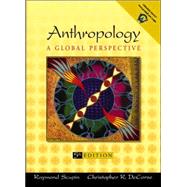
| Basic Concepts in Anthropology | |
| Introduction to Anthropology | |
| Record of the Past | |
| Evolution | |
| Physical Anthropology | |
| The Primates | |
| Hominid Evolution | |
| Human Variation | |
| Archaeology | |
| Paleolithic Cultures | |
| The Origins of Domestication and Settled Life | |
| The Rise of the State and Complex Society | |
| Basic Concepts of Culture and Society | |
| Culture | |
| The Process of Enculturation | |
| Language | |
| Anthropological Explanations | |
| Analyzing Sociocultural Systems | |
| Studying Different Societies | |
| Band Societies | |
| Tribes | |
| Chiefdoms | |
| Agricultural States | |
| Industrial States | |
| Consequences of Globalization | |
| Globalization,Culture, and Indigenous Societies | |
| Globalization in Latin America, Africa, and the Caribbean | |
| Globalization in the Middle East and Asia | |
| Anthropology and the Global Future | |
| Race and Ethnicity | |
| Contemporary Global Trends | |
| Applied Anthropology | |
| Table of Contents provided by Publisher. All Rights Reserved. |
The New copy of this book will include any supplemental materials advertised. Please check the title of the book to determine if it should include any access cards, study guides, lab manuals, CDs, etc.
The Used, Rental and eBook copies of this book are not guaranteed to include any supplemental materials. Typically, only the book itself is included. This is true even if the title states it includes any access cards, study guides, lab manuals, CDs, etc.